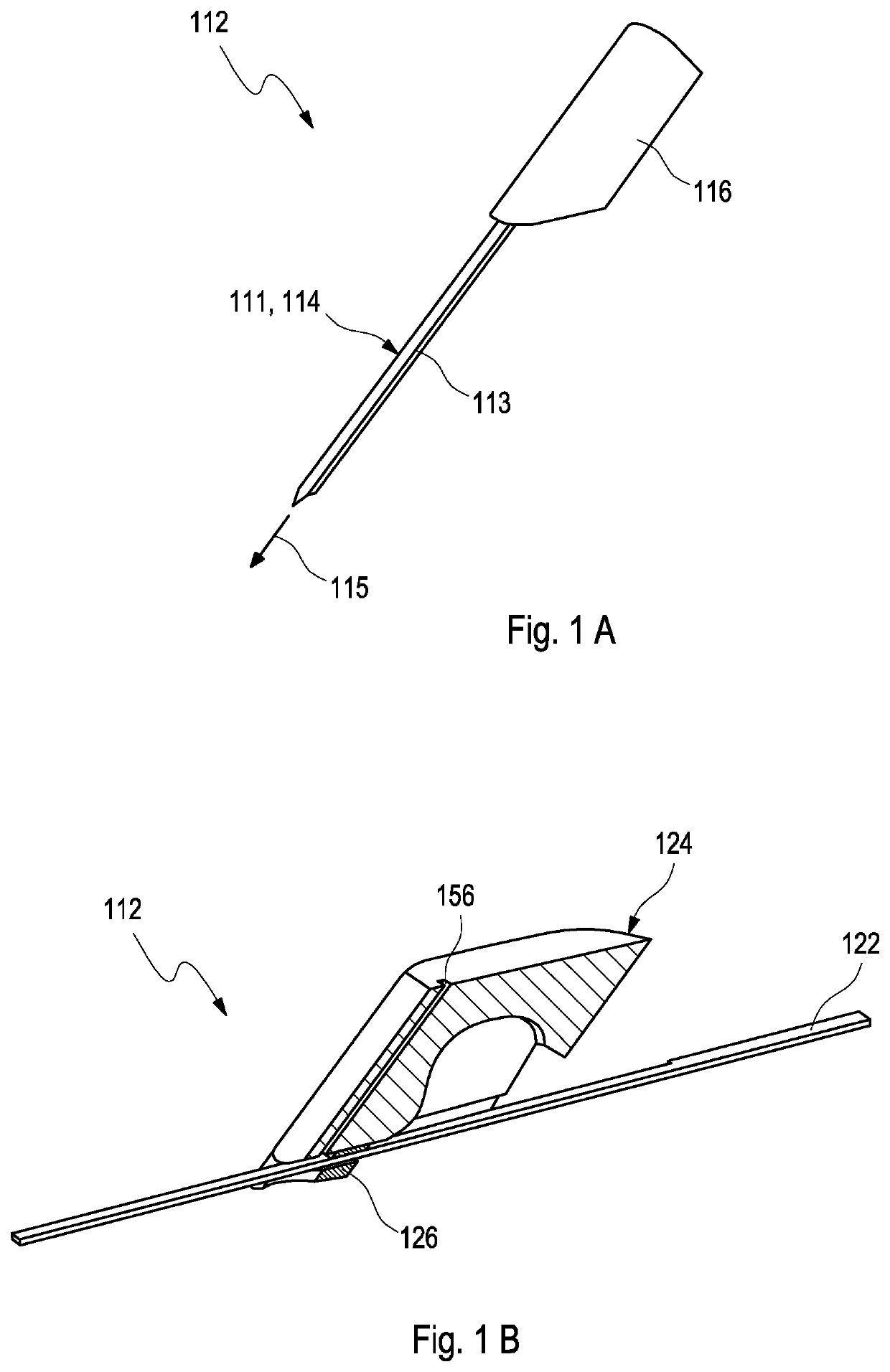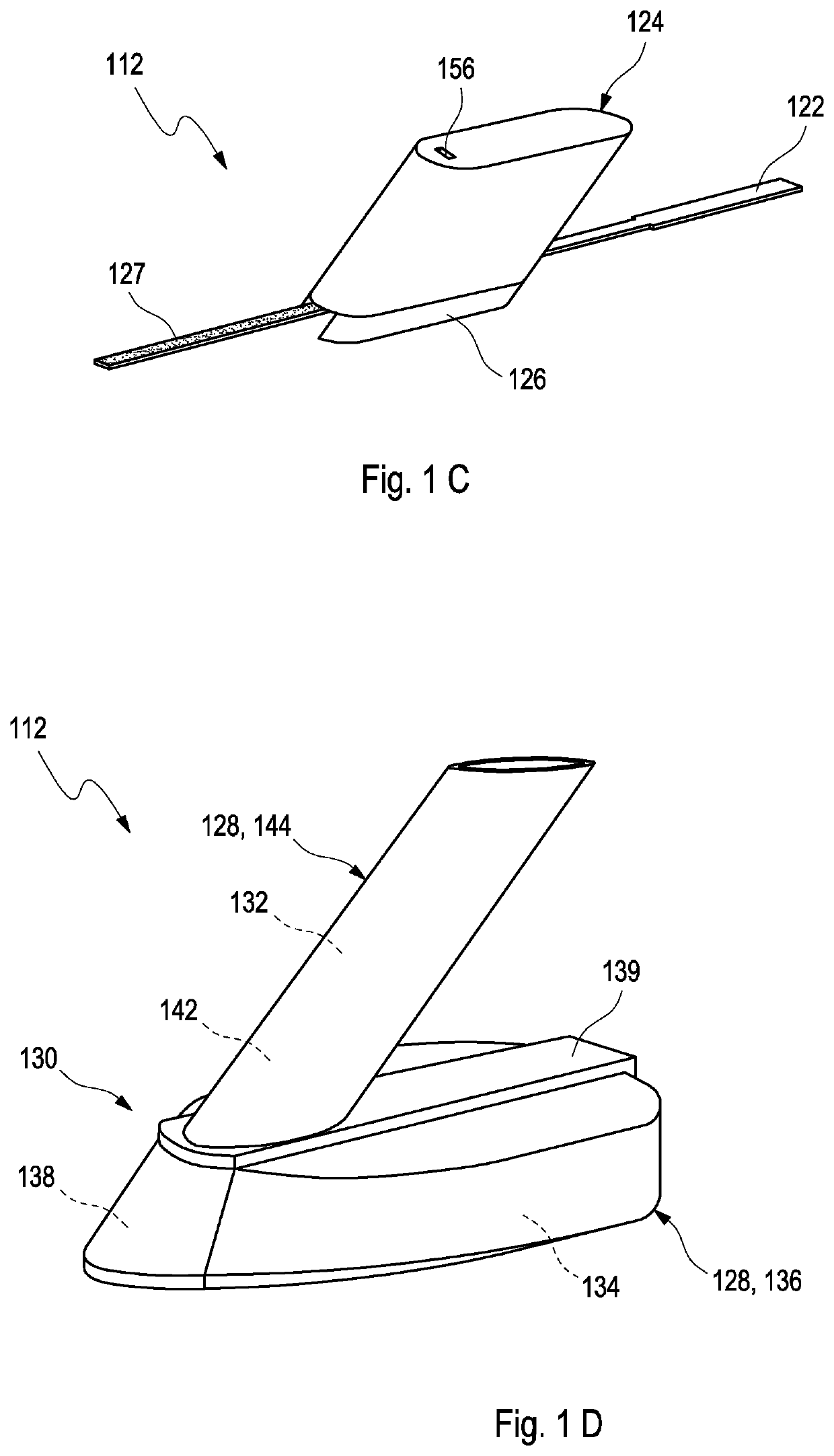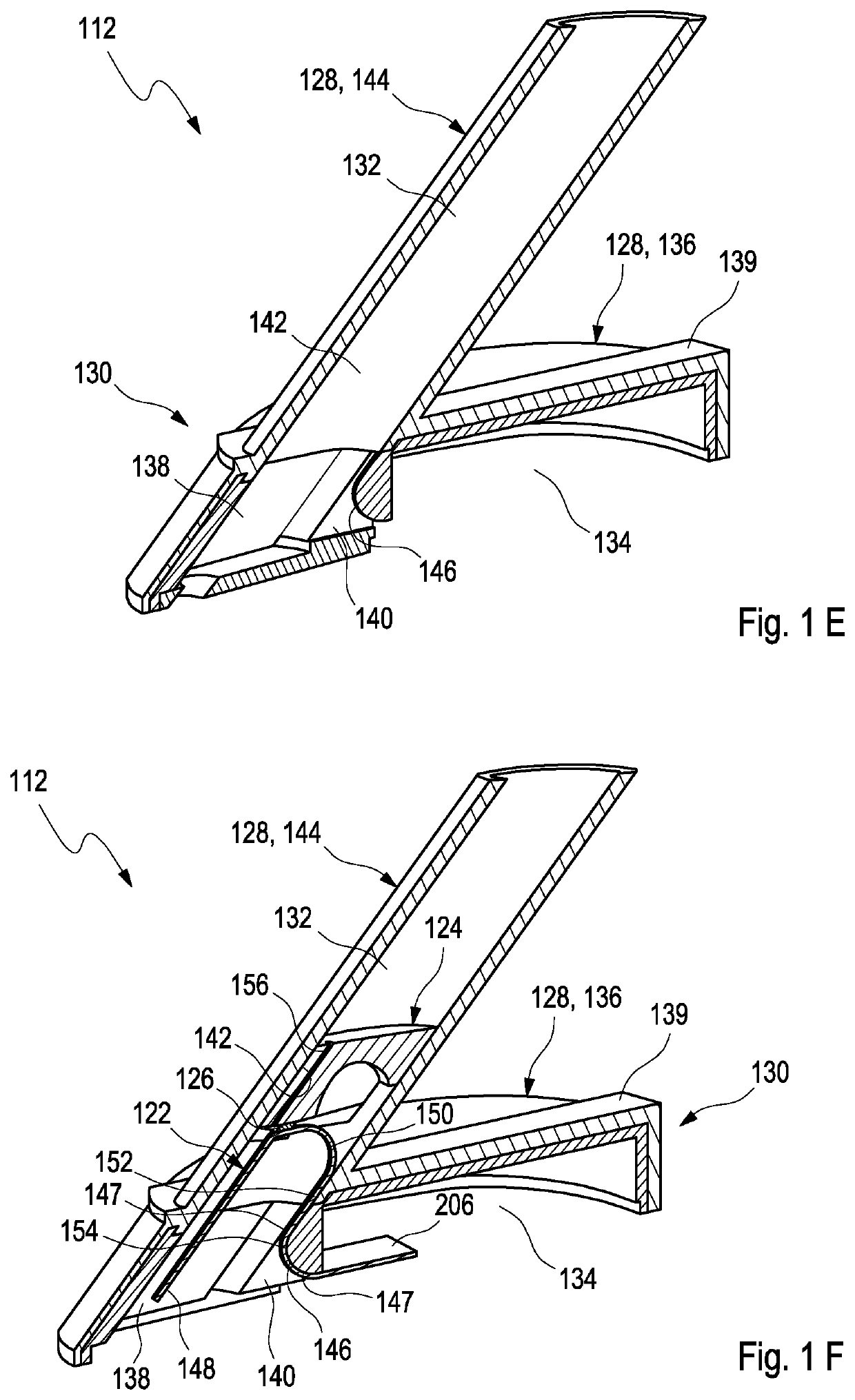Medical device for detecting at least one analyte in a body fluid
a technology of a medical device and a body fluid, which is applied in the field of medical devices for detecting at least one analyte in a body fluid, can solve the problems of increasing the volume of the system, significant technical challenges, and increasing the production cost of the analytical system, and achieves the effect of small construction volume and robust design
- Summary
- Abstract
- Description
- Claims
- Application Information
AI Technical Summary
Benefits of technology
Problems solved by technology
Method used
Image
Examples
Embodiment Construction
[0157]FIGS. 1A to 1M show an exemplary embodiment of a method for sampling a medical device 110. The medical device 110 is depicted in FIGS. 1K to 1M. In FIG. 1K, the medical device 110 is illustrated in a cross-section of view. In FIGS. 1L to 1M, the medical device 110 is illustrated in different perspective views, respectively. In FIGS. 1A to 1J, various intermediate products 112 of the medical device 110 are shown.
[0158]Firstly, as depicted in FIG. 1A, an insertion cannula 114 may be provided. The insertion cannula 114 may be fixedly attached to a insertion cannula slider 116. Specifically, the insertion cannula 114 may be a slotted cannula 111 with the insertion cannula 114 having a slot 113 extending in an axial direction 115.
[0159]In a further step, as illustrated in FIGS. 1B and 1C, an analyte sensor 122 may be provided. The analyte sensor 122 may be fixedly attached to an analyte sensor slider 124. Specifically, as depicted in FIG. 1B, the analyte sensor 122 may be received ...
PUM
 Login to View More
Login to View More Abstract
Description
Claims
Application Information
 Login to View More
Login to View More - R&D
- Intellectual Property
- Life Sciences
- Materials
- Tech Scout
- Unparalleled Data Quality
- Higher Quality Content
- 60% Fewer Hallucinations
Browse by: Latest US Patents, China's latest patents, Technical Efficacy Thesaurus, Application Domain, Technology Topic, Popular Technical Reports.
© 2025 PatSnap. All rights reserved.Legal|Privacy policy|Modern Slavery Act Transparency Statement|Sitemap|About US| Contact US: help@patsnap.com



